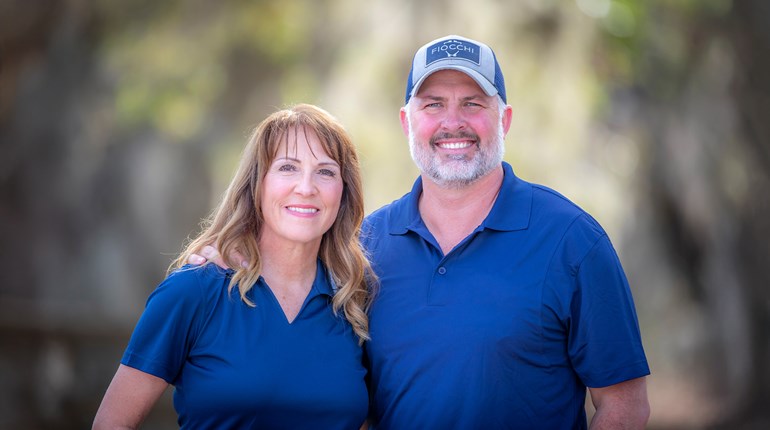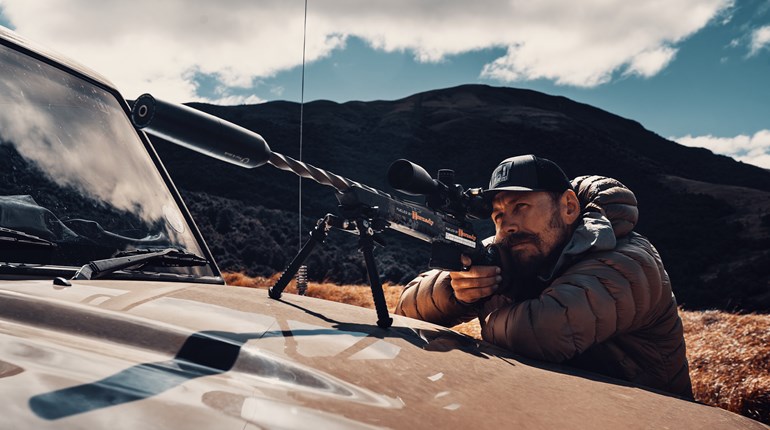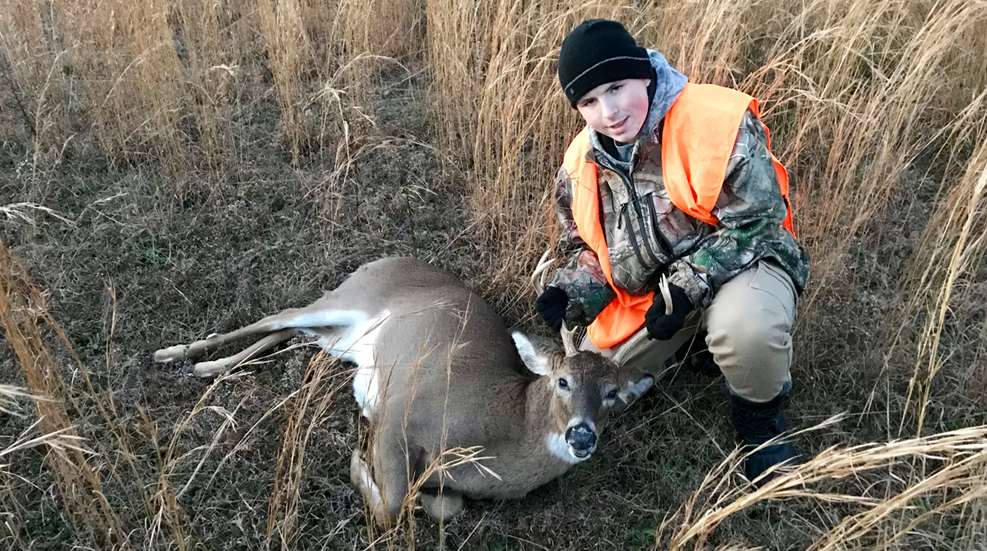
By the second week of West Virginia deer season, most hunters are inside, out of the bitter mountain cold, and the deer are hunkered down until about one hour either side of daylight. Both deer and hunters know the game is on, and the deer are praying for the worst possible weather which keeps the hunters inside―or at least most of them inside as rifle season comes to close.
For me, this has been a long year competitive shooting-wise. In a weird way I was glad to put down the competition guns and pick up my long-range hunting gear. Like many things in my life, few things are mine alone and on this December day, my middle son Ryan informed me that he would “help me” hunt. Reports had come in that there were some nice bucks at Peacemaker that had managed to avoid the other hunters during the peak of regular deer season.
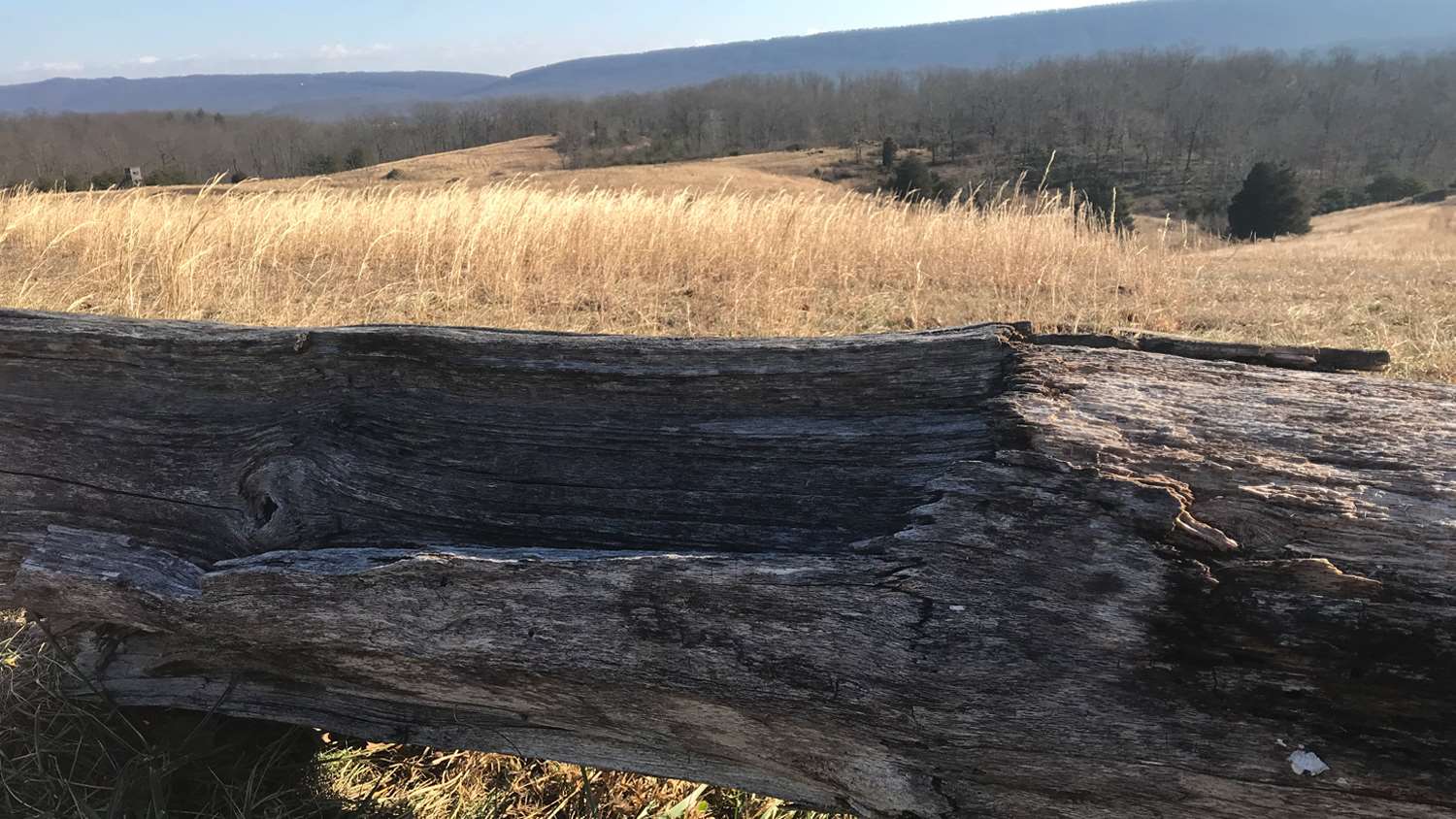
We decided to hunt a picturesque spot that overlooked several sweeping fields with a variety of wooded ravines running through the ancient fields into a broken treeline of mature timbers and brushy areas. From this elevated point looking down about 200 feet we could see that the field of fire was approximately 70 degrees left to right with the actual distance about 900 yards from left to right. Likely firing distances were 250 yards to 500 yards with only peaks of areas through the trees visible beyond 500 yards. The fields were unusually grassy due to heavy rains that soaked the area in the weeks prior. The growing brush made it easy for deer to hide, and even harder to range or shoot. Upon arrival at the old ambush spot the grass was high, making prone shooting nearly impossible―something I didn’t anticipate. The temperature was 26 degrees and falling, it was slightly overcast and winds were 10-20 mph west/northwest and gusting―cold was the word.
It’s important to understand the specific factors prior to set-up:
- Firing Position – The spot had a massive 24-inch log laying across the ground. The grass was tall, making prone shooting impossible.
- Temperature – 26 degrees and falling.
- Wind – 10 to 20 mph and gusting from west/northwest.
- Elevation – Approximately 200 feet above the area we were hunting.
- Youth Hunter – Inexperienced, but happy. Stunned by the cold and the activity of the deer.
Sitting on stools helped us to see above the grass and blend into the bluff. I then pulled out the gear:
- Gunwerks 7LRM.
- 180-grain Berger Hunting VLD cartridge.
- Nightforce 5-22x50 mm riflescope with MOA reticle.
- Altlas Bipod with Hawk Talon feet.
- Silencerco Harvester suppressor.
Additionally, I deployed several Armageddon Gear field bags for rear or front support. I also brought a Zeiss Gavia spotting scope and the incredible Zeiss 10-42 Victory Range Finding binoculars. I supplied Ryan with a set of quality binoculars, too, so he could help glass and look for deer. Finally, I used a basic wind meter to help better understand the gusting conditions.
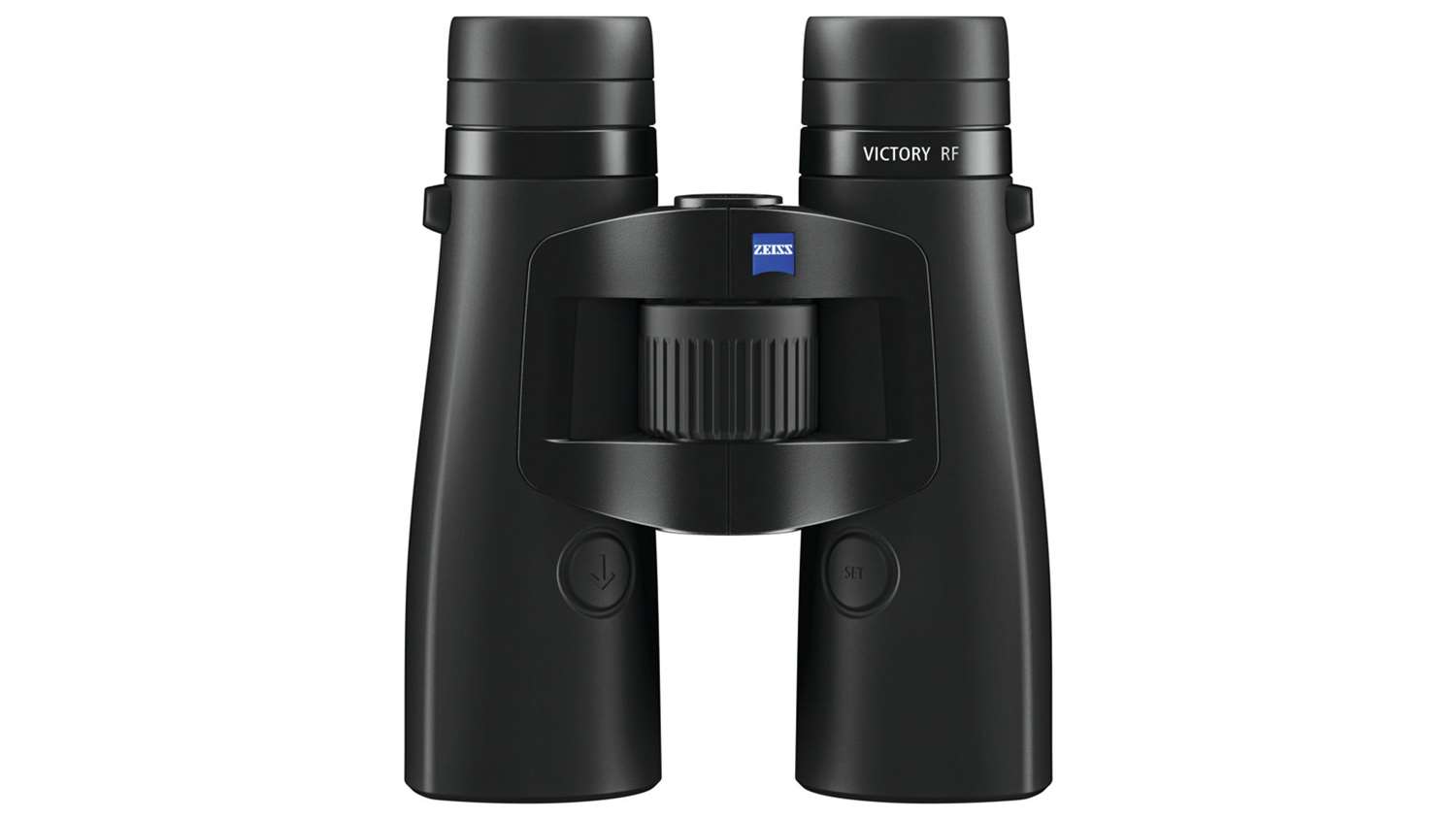
By 2:30 p.m. we had not even seen a tail, and I was concerned that my hunting buddy was going to wuss out due to the cold. Not even close―Ryan was busy with the binoculars and the Zeiss range finder. Soon he had it down to an art―which made me smile and think about our scent and the wind, as it was spreading all over the place like a damn mini-tornado. I was optimistic it would die down as we got near dusk as it normally did. My mind began to settle as the peace of hunting and the beauty of the fields and mountains before me reminded me of all of the great things life had to offer―especially Ryan learning the great lessons that hunting brings.
Further, my mind went back to the years of teaching long-range shooting and long-range hunting to students at Peacemaker. I focused on the task at hand―remembered that in long-range hunting, you have to prepare for the upcoming situations that occur in just minutes or even seconds. Here’s my checklist:
- Wind Bracket – What is the wind bracket from 300-500 yards for 10 and 20 mph. This is an old sniper technique that is extremely valuable in competition and in hunting when used properly.
- Range Card – A good long-range hunter is able to draw on paper or in his mind make a range card, which has key markers and associates the markers with real distances.
- Turret – Did I set my turret to a proper median distance? The best thing in long-range hunting is to ensure you can certainly and quickly set the proper drop compensation on the scope. My standard is to ALWAYS make my shot is within 1 MOA of my aiming point on the animal. If I am not certain of this standard at the time of firing, I will pass on the shot.
- Position – In this situation, I can’t shoot prone (because of the grass). So I need to think, how can I get on target/s quickly and what position will or can I shoot from with confidence of making the shot within my 1 MOA standard in these high wind conditions? In this case I’m going to kneel on both knees and place the bipod as high as I can on the log and use the hawk talons to spear into the log for an aggressive amount of pressure on the rifle to increase stability. Double kneeling also allows me to quickly scan the field and acquire the target(s). As it turned out, this position worked very well and I developed this position in the sport of PRS (Precision Rifle Series) style of shooting.
- Optic – Did I check for parallax issues, did I set my variable scope to 5x power to ensure I acquire targets quickly with a wide field of view?
- Youth Hunter – Did I ensure that he was in a safe position so that when things happen quickly I can move fast and be certain that he was or would not be in a bad spot?
By this time it was now 3:30 p.m. and Ryan had not looked up yet from his binoculars. I reminded Ryan that the binoculars were an aid and only and aid, no matter how cool they were. You need to use your eyes and scan the fields and treelines for any form of movement or something that looks like a deer. When you see movement or something you think is a deer, put the binoculars on it fast and find out if it’s a deer.
Suddenly, there was action in the field. As if a starter pistol had signaled the field to come alive out of nowhere?
Ryan began to say, there’s one, there’s another one, why is that one running, there’s a buck and on and on with all the excitement you would expect from such a momentous occasion. We decided that that if we saw a decent buck, we’d get it processed. Ryan also had yet to shoot a deer, or even see one shot, so I agreed today would be the day if the opportunity presented itself.
I raced with the binocular rangefinder, sorting through several deer at about 400 yards in a running away with a fast gallop. I thought, well the wind must have given us up, but then I thought a buck may be chasing them and there it was―a nice buck giving chase. While I only glimpsed the buck chase scene for a moment I explained to Ryan that we may see them again and to watch for them closely to return. By now, light was fading fast and the activity of deer was increasing, right on schedule. I even think the wind died down to about 18 mph.
Then in an almost instant, our buck and three does came running directly toward us at about 500 yards, now 450, now 400, now 350. At this point the binoculars were on the log and I was behind the rifle and in position. Ryan, well he was explaining to me all of this in a fevered pace. The buck was not a monster but was clearly at least a nice WV six- or eight-point, big healthy and had one thing on his mind―and it wasn’t us. Now I had made the decision to drop him if the opportunity was right and if he would just stop moving. Of course he did not, at least until later. He was chasing and pushing that doe all over the place. The ranges were changing too quickly, and whenever he did stop he was behind a limb, or brush or another deer or something. I thought, stick with it, think of the range, set range on turret at 425, knowing that anything from 450 to 400 is within my 1 MOA standard on drop compensation which allowed me to dope the wind by feel and experience, no time for a Kestrel to save me now.
The buck was still in a difficult spot, but he was getting close to a spot that might work. The old shooting maxim “Stability, Sights, Trigger” which really sums up shooting (especially long-range hunting) in three words was running through my mind. I relaxed and tucked my right rear arm into my side and hip, leaned hard into the rifle and oxygenated my lungs to calm my body. I knew the wind was quartering, resulting in a a 1 to 1.5 MOA right-to-left hold. This was a tough position. In fact, I know that I’ve had shots at 900 yards that were far easier. But I had put in the time, prepped the gear and did not fool around with gadgets. Instead, I waited for the situation to transform, only acting when the time is right. I was ready.
I needed the buck to continue to move toward the doe about another 30 yards and stop. If he did, and I know he would, he would appear between a lone tree branch fork at about 450 yards. I could take him at that exact spot and moment. Sure enough, the doe started moving, then stopping for a few seconds. My safety was off when he moved into the spot. I exhaled, pressed the trigger, and as the rifle lunged the suppressor guided the recoil into my shoulder. I could see the deer as he dropped—it was textbook. The dull sound of a death drop followed the bullet, whose sound had been easily muffled by the ability of the suppressor. That buck had the most humane death possible. In an instant, he was not only feeding a family, but also providing life lessons to a young boy with his dad—bringing balance to people and nature. It was perfect.
So why does this matter to competitive shooters?
In looking back, there’s a few key things to note.
Long-range hunting is not just the 1000-yard shot, in fact it almost never is. In long-range hunting, especially when doing it by yourself or as in this case with a young inexperienced helper, the hunter has to be tremendously prepared and have the right gear. In this case the greatest piece of gear was the Zeiss Victory RF binoculars. They enabled me to quickly observe the deer, range it, check to determine if it was a shooter and then immediately get on my rifle, and shoot quickly.
Additionally, in this situation the many years of competitive shooting in all disciplines enabled this type of shot. As a pistol shooter I learned just what real trigger control meant and how to apply it as a precision rifle shooter. As a rifleman, the sport of PRS (Precision Rife Series) dramatically improved my positional shooting skills. As a multi gun shooter, the skills developed surrounding planning out my approach for how and what way it would be best to shoot were very helpful. Finally, all the skills from competitive shooting were on display in this scenario, especially with the ability to feel and manage pressure under time constraints. Competition shooting builds great life skills and practical life skills. It also will make you one heck of a shooter and hunter especially if you learn how to use your gear in the right way at the right time.
I hope this story helps to remind you just how important the right to bear arms is and why supporting the NRA is critical. I further hope to see you partaking in the many NRA and other competition shooting events in the future. If you see me, please introduce yourself and tell me how competitive shooting is helping you. I’d love to hear all about it.














